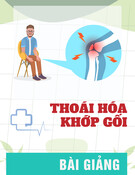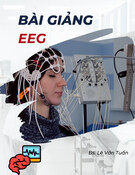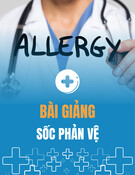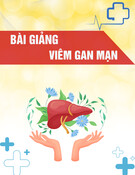CHIẾN LƯỢC GIẢM ĐỘT TỬ TRONG SUY TIM
TS.BS Tôn Thất Minh GĐ Bệnh viện tim tâm đức TP HCM Hue 07.2019
Disclosure
Presenter’s Name: Ton That Minh
• Employed as Director of Tam Duc Heart Hospital and lecturer at Pham Ngoc Thach Medicine University
Relevant Nonfinancial Relationships:
• Societies member – VNHA, HCMCA, VN ICA, South ICA
Last 12 month Relevant Financial Relationships:
Receives a financial support for speaking and traveling from Astra-Zeneca, Medtronic, Biotronic, Boehringer, Sanofi, MSD, Novartis, Servier, Pfizer.
This presentation is supported by Novartis.
References for this presentation will be provided if required.
NỘI DUNG
1. Khái niệm suy tim ổn định 2. Khuyến cáo phòng ngừa đột tử 3. ARNI chiến lược giảm đột tử trong suy tim 4. Kết luận
Suy tim là một bệnh tiến triển
Sự thoái triển cấu trúc và chức năng tim xảy ra ngay trong giai đoạn sớm
▪ Bệnh nhân suy tim có nguy cơ đột tử trong suốt quá trình bệnh (5,6). ▪ Đột tử có tỷ lệ lớn hơn ở bệnh nhân trẻ tử vong với suy tim nhẹ, hơn khi
bệnh suy tim tiến triển (6-8).
HF symptom onset
Risk of sudden death
Chronic decline
Cardiac function and quality of life
Hospitalizations for acute decompensation episodes
Disease progression
4
1. Gheorghiade et al. Am J Cardiol. 2005;96:11G–17G; 2. Gheorghiade, Pang. J Am Coll Cardiol. 2009;53:557–73; 3. Lee et al. Am J Med. 2009 122, 162-69; 4. Allen et al. Circulation. 2012 Apr 17; 125(15): 1928–1952; 5. Ponikowski et al. Eur Heart J. 2016(37):2129-2200;; 6. Al-Khatib et al. Circulation. 2017;000:e000–e000. DOI: 10.1161/CIR.0000000000000549; 7. Bogle et al. J Am Heart Assoc. 2016;5:e002398; 8. Uretsky, Sheahan. J Am Coll Cardiol. 1997;30:1589-1597; Figure adapted from Gheorghiade et al. 2005
NYHA không là chỉ số duy nhất đánh giá tính ổn định
• Nhóm bệnh nhân ít triệu chứng chưa được chú ý đúng mức • Đa số bác sĩ suy nghĩ rằng NYHA II / ít triệu chứng không phải nhóm
nguy cơ cao
• Triệu chứng chưa được khai thác kỹ để đánh giá • “bệnh nhân không than phiền / ít than phiền có nghĩa là bệnh nhân ổn
định”
Định nghĩa thế nào là một bn suy tim ổn định?
- Triệu chứng ổn định, không xấu đi với NYHA I-II từ lần xuất viện trước? - Bệnh nhân đã “quen” với thuốc cũ? - 3 tháng, 6 tháng, 12 tháng... gần đây chưa cần nhập viện?
Không có suy tim ổn định:
NYHA II vẫn tiếp tục tử vong
▪ MERIT HF post hoc analysis: the incidence of SCD is higher in patients with less severe HF (NYHA class II), although total mortality rates increase with higher NYHA class1
▪ PARADIGM-HF analysis: 44.8% of NYHA class II HF CV deaths were SCDs2
SCD
CHF Other
70
NYHA Class II: Mode of CV death N=791
60
50
)
%
40
( h
t
30
a e D
20
10
0
NYHA II
NYHA III
NYHA IV
*Other CV death includes all CV deaths not ascribed to pump failure or sudden death
A post-hoc analysis from MERIT-HF (n=3991)1 Mean follow up, 1 year
An analysis from PARADIGM-HF(n=8399)2 Median follow up, 2.3 years
1.MERIT-HF Study Group. Lancet. 1999;353(9169):2001–7; 2. Desai AS et al. Eur Heart J. 2015;36:1990–7
CV, cardiovascular; HF, heart failure; MERIT-HF, Metoprolol 11 CR/XL Randomised Intervention Trial in-Congestive Heart Failure; NYHA, New York Heart Association; PARADIGM-HF, Prospective comparison of ARNI with ACEI to Determine Impact on Global Mortality and morbidity in Heart Failure;SCD, sudden cardiac death; CHF, congestive heart failure
Bệnh nhân suy tim NYHA II có nguy cơ cao bị đột tử Sự thoái triển cấu trúc và chức năng tim xảy ra ngay trong giai đoạn sớm
70
NYHA class II: Mode of CV death N=791
60
64
)
50
%
40
( h
t
59 56
Other CV death * 28.2%
30
a e D
33
20
26 24
Sudden death 44.8%
10
0
NYHA II
NYHA III
NYHA IV
15 12 11
Worsening HF 27.1%
Sudden death WHF
Other*
*Other death includes all CV deaths not ascribed to WHF or sudden death
*Other CV death includes all CV deaths not ascribed to pump failure or sudden death
A post-hoc analysis from MERIT-HF (n=3,991)1 Mean follow up, 1 year
An analysis from PARADIGM-HF (n=8,399)2 Median follow up, 2.3 years
7
1. MERIT-HF Study Group. Lancet. 1999;353(9169):2001–7; 2. Desai et al. Eur Heart J. 2015;36:1990–7
Phòng ngừa tiên phát đột tử do tim ở BN bệnh động mạch vành
Primary prevention in pts with IHD, LVEF ≤40% Yes Inducible sustained VT ICD (Class I) EP study (especially in the presence of NSVT)
No Yes* GDM T (Class I) MI <40 d and/or revascularization <90 d
WCD (Class IIb) No Reassess LVEF >40 d after MI and/or >90 d after revascularization
NYH A class I LVEF ≤30% NYH A class II or III LVEF ≤35% LVEF ≤40% NSV T, inducible sustained VT on EP study NYH A class IV candidate for advance HF therapy†
Yes No Yes No Yes
GDM T ICD (Class I)* ICD (Class I) ICD (Class IIa)
1. Al-Khatib et al. Circulation. 2017;000:e000–e000. DOI: 10.1161/CIR.0000000000000549
ICD should not be implanted (Class III: No Benefit)
2016 ESC: Khuyến cáo phòng ngừa đột tử
Recommendations for implantable cardioverter-defibrillator in patients with heart failure
Recommendations
Class
Level
An ICD is recommended to reduce the risk of sudden death and all-cause mortality in patients with symptomatic HF (NYHA Class II–III), and an LVEF ≤35% despite ≥3 months of OMT, provided they are expected to survive substantially longer than one year with good functional status, and they have:
IHD (unless they have had an MI in the prior 40 days)
I
A
DCM
I
B
Recommendations for the management of ventricular tachyarrhythmias in heart failure1
Recommendations
Class
Level
I
A
Treatment with beta-blocker, MRA and sacubitril/valsartan reduces the risk of sudden death and is recommended for patients with HFrEF and ventricular arrhythmias
1. Ponikowoski et al. Eur Heart J. 2016;37:2129–2200
2017 AHA/ACC/HRS: Khuyến cáo phòng ngừa đột tử
Recommendations for Primary Prevention of SCD in Patients With Ischemic Heart Disease
Recommendations
Class
Level
I
A
1. In patients with LVEF of 35% or less that is due to ischemic heart disease who are at least 40 days’ post-MI and at least 90 days postrevascularization, and with NYHA class II or III HF despite GDMT, an ICD is recommended if meaningful survival of greater than 1 year is expected
I
A
2. In patients with LVEF of 30% or less that is due to ischemic heart disease who are at least 40 days’ post-MI and at least 90 days postrevascularization, and with NYHA class I HF despite GDMT, an ICD is recommended if meaningful survival of greater than 1 year is expected
Recommendations for pharmacological prevention of SCD1
Recommendations
Class
Level
I
A
In patients with HFrEF (LVEF ≤40%), treatment with a beta blocker, MRA and either an ACEI, ARB, or an angiotensin receptor neprilysin inhibitor is recommended to reduce SCD and all-cause mortality
1. Al-Khatib et al. Circulation. 2017;000:e000–e000. DOI: 10.1161/CIR.0000000000000549
Đột tử vẫn còn xảy ra dù BN được đặt máy ICD
▪ In a review of 320 patient deaths during trials
▪ In an analysis of trials of ICD systems, greater absolute benefit was found in patients with ischemic heart disease compared with dilated cardiomyopathy2
of ICD systems, the most common mechanism of sudden death in patients with an ICD was VT/VF treated with an appropriate shock followed by EMD1
Risk ratio
IV, Random, 95% CI
Study or subcategory
lschemic cardiomyopathy 01 - MADIT
04 - MADIT II
08 - SCD-HeFT
Subtotal (95% CI)
Non-ischemic cardiomyopathy 03 - CAT
05 - AMIOVIRT
06 - DEFINITE
08 - SCD-HeFT
Subtotal (95% CI)
Total (95% CI)
0.1 0.2
0.5
1
2
5
10
Favours ICD Favours control
Mitchell et al. J Am Coll Cardiol. 2002;39:1323– 8; 2. Theuns et al. Europace. 2010;12:1564-70; Figure on left from Mitchell et al; Figure on right adapted from Theuns et al.
Nghiên cứu PARADIGM-HF
Randomization (N=8,442 patients with CHF [NYHA Class II–IV with LVEF ≤40%] and elevated BNP)
Double-blind randomized treatment period
Sacubitril/valsartan 97/103 (200) mg BID
Single-blind run-in period
Enalapril 10 mg BID
Enalapril 10 mg BID‡ Sac/val 49/51 (100) mg BID Sac/val 97/103 (200) mg BID
On top of standard HF therapy (excluding ACEi and ARB) Testing tolerability to target doses of enalapril and sacubitril/valsartan
2 weeks 1–2 weeks 2–4 weeks Median duration of follow-up 27 months
A washout of more than a day occurred between enalapril and sacubitril/valsartan dosing and at randomization
Primary outcome: CV death or HF hospitalization
‡Enalapril 5 mg BID for 1–2 weeks followed by enalapril 10 mg BID as an optional starting run-in dose for patients who are treated with ARB or with a low dose of ACEi.
1. McMurray et al. Eur J Heart Fail. 2013;15:1062-1073; 2. McMurray et al. Eur J Heart Fail. 2014;16:817-825; 3. McMurray et al. N Engl J Med. 2014;371:993- 1004
PARADIGM-HF: Sacubitril/valsartan giảm tiêu chí chính
Primary Endpoint: Time to First Occurrence of CV Death or HF Hospitalization
1.0
Enalapril
Sacubitril/valsartan
0.6
t n e v e f o y t i l i
Hazard ratio = 0.80 (95% CI: 0.73–0.87) P<0.0001
0.4
1117 events
b a b o r p e v
914 events
l
0.2
i t a u m u C
0
0
180
360
540
720
900
1080
1260
No. at risk
Days since randomization
896
249
Sacubitril/valsartan
4187
3922
3663
3018
2257
1544
853
236
Enalapril
4212
3883
3579
2922
2123
1488
1. McMurray, et al. New Engl J Med. 2014;371:993-1004
Sacubitril/valsartan làm giảm đáng kể đột tử so với enalapril
0.10
Enalapril
311/4187 died (7.4% patients)
Sacubitril/valsartan
0.08
250/4212 died (6.0% patients)
0.06
Hazard ratio=0.80 (95% CI: 0.68–0.94) p=0.008
n e d d u s f o y t i l i
h t a e d
0.04
b a b o r p e v
0.02
l
i t a u m u C
0
0 180 360
540
720
900
1080
1260
Days since randomization
3891
No. at risk Sacubitril/valsartan 4187 Enalapril
4212
3860
2478 2410
1005 994
1. Desai et al. Eur Heart J 2015;36:1990-7; 2. McMurray, et al. New Engl J Med. 2014;371:993-1004
Lợi ích giảm đột tử của sacubitril/valsartan độc lập với ICD
▪
ICD and CRT-D use in PARADIGM-HF was 15% and 5%1,2 respectively, similar to that in other recent HFrEF trials.3,4 While the patients with an ICD had a lower overall risk of sudden death, their use did not eliminate risk completely
▪ The sacubitril/valsartan treatment effect on sudden death was not influenced by the presence
of defibrillator devices2
▪ Among patients with an ICD, use of sacubitril/valsartan reduced the relative risk of sudden
death by 51% compared with enalapril2
PARADIGM-HF
Sudden death n (%)
Hazard ratio, sac/val vs. enalapril (95% CI)
− ICD
7.3% (525/7156)
0.82 (0.69–0.98)
Enalapril*
8% (287/3592)
n/a
Sac/val*
6.7% (238/3564)
n/a
+ ICD
2.9% (36/1243)
0.49 (0.25–0.98)
Enalapril*
3.9% (24/620)
n/a
Sac/val*
1.9% (12/623)
n/a
This was a post hoc analysis; * Novartis data on file 1. McMurray et al. 2014. Eur J Heart Fail. 2014;16:817-25; 2. Desai et al. Eur Heart J. 2015;36:1990-7; 3. Swedberg et al. Lancet. 2010;376:875-85; 4. Zannad et al. N Engl J Med 2011;364:11-21
Sacubitril/valsartan làm giảm nguy cơ đột tử hay ngưng tim so với enalapril, bất chấp ICD
Sudden Death or Cardiac Arrest in ICD Patients
Sudden Death or Cardiac Arrest
Enalapril
0.12 0.12
Sacubitril/valsartan
Hazard ratio = 0.54 (95% CI: 0.30–1.00) p=0.05
0.10 0.10
0.07 0.07
0.05 0.05
Hazard ratio = 0.77 (95% CI: 0.66–0.92) p=0.002
0.03 0.03
Days since randomization
Days since randomization
P-interaction for efficacy of sacubitril/valsartan and ICD = 0.21
Novartis data on file.
0 500 1000 1500 0 500 1000 1500
Sacubitril/valsartan’s potential mechanism of action for the reduction in sudden deaths
Effects of angiotensin-neprilysin inhibition as compared to angiotensin inhibition on ventricular arrhythmias in reduced ejection fraction patients under continuous remote monitoring of implantable defibrillator devices
de Diego et al. Heart Rhythm 2018;15(3):395-402
Study design and patient population
Pre-ARNI
Post-ARNI
Switch treatment to ARNI
Sacubitril/valsartan
Angiotensin inhibition (ramipril or valsartan)
36 h ACEi washout
9 months
9 months
Analysis: • Appropriate shocks • NSVT • PVC burden • Biventricular Pacing %
β-blockers and MRA
Patient population: 120 HFrEF patients with ICD or ICD-CRT referred to cardiology HF/arrhythmia outpatient clinic: ▪ HF symptoms with NYHA class ≥II despite optimal medical therapy, including initiation and titration of ACEi (ramipril) or ARB (valsartan), β-blockers, and MRA if tolerated
▪ LVEF ≤40% ▪ Under home monitoring of an ICD ▪ Patients serve as their own control by design
19
1. de Diego et al. Heart Rhythm. 2018;15(3):395-402
Patient characteristics pre- and post- intervention (1/3)
▪ Study design ensured patients served as their own controls1
Pre-ARNI (n = 120)
Post-ARNI (n = 120)
P value
69 ± 8 91 (76) 98 (82) 75 (62) 36 (30) 62 (52) 48 (40)
70 ± 8 91 (76) 98 (82) 75 (62) 36 (30) 63 (52) 48 (40)
NS NS NS NS NS NS NS
Clinical characteristics Age (yrs) Male Ischemic cardiopathy Hypertension Diabetes Hypercholesterolemia Renal insufficiency (filtration rate <60 mL/min) Rhythm Sinus rhythm Paroxysmal AF Permanent AF
85 (71) 17 (14) 35 (29)
84 (70) 12 (10) 36 (30)
NS .07 NS
20
Values are given as mean ± SD, n (%), or %. 1. de Diego et al. Heart Rhythm. 2018;15(3):395-402;
Patient characteristics pre- and post- intervention (2/3)
▪ Patients were on OMT throughout the study period
▪ An improvement in NYHA functional class and a reduction in the dose of diuretic
treatment were observed post-ARNI
Pre-ARNI (n = 120)
Post-ARNI (n = 120)
P value
Medical treatment β-blocker Mineraloid antagonist Antiarrhythmic drug Oral diuretic
100% ACEi or ARB 98% 97% 30% 75%
100% sacubitril-valsartan 98% 97% 29% 52%
NS NS NS <.03
Device ICD only ICD + CRT Primary prevention Secondary prevention
56% 44% 65% 35%
56% 44% 65% 35%
NS NS NS NS
Clinical data
2.4 ± 0.4
1.5 ± 0.7
<.0002
NYHA functional class (I–IV)
21
Values are given as mean ± SD, n (%), or % 1. de Diego et al. Heart Rhythm. 2018;15(3):395-402
Patient characteristics pre- and post- intervention (3/3)
▪ There was a significant increase in LVEF and LVEDD post-ARNI1, suggesting both
functional and structural improvements in cardiac tissue1-3
▪ Levels of pro-BNP were lowered post-ARNI1, potentially leading to a reduction in
myocardial wall stress and a lower likelihood of ICD shocks1,4
Pre-ARNI (n = 120)
Post-ARNI (n = 120)
P value
Echocardiographic data
LVEF (%) LVEDD (mm)
30.4 ± 4 61 ± 5
35.1 ± 8 58 ± 6
<.01 <.01
Examination data Systolic blood pressure (mmHg) Diastolic blood pressure (mmHg) Heart rate average (bpm)
121 ± 38 73 ± 23 67 ± 7
107 ± 39 64 ± 26 64 ± 5
<.02 <.006 <.006
Blood tests Potassium level (mEq/L) Pro-BNP (pg/mL) Glomerular filtration rate (mL/min)
4.4 ± 0.5 1971 ± 1530 55 ± 19
4.7 ± 0.5 1172 ± 955 57 ± 19
<.03 <.01 NS
22
Values are given as mean ± SD, n (%), or % 1. de Diego et al. Heart Rhythm. 2018;15(3):395-402; 2. Al-Khatib et al. Circulation. 2017;000:e000–e000. DOI: 10.1161/CIR.0000000000000549; 3. Tomaselli , Zipes. Circ Res. 2004;95:754-63; 4. Levine et al. Heart Rhythm 2014;11:1109– 1116
Sacubitril/valsartan significantly increased survival free time from appropriate ICD shocks, compared with ACEi/ARB ▪ The most common mechanism of sudden death in patients with an ICD was VT/VF treated
with an appropriate shock followed by EMD2
▪ ICD patients suffer from poorer psychological well-being following shocks, which impacts
QoL3-5
100
n=120 P<0.02
90
s k c o h s D C
I
m o r f e e r f l
a v
i
80
v r u S
e t a i r p o r p p a
Pre-ARNI
Post-ARNI 70
0 3 6 9 Time (months) Number at risk
ARNI 120 120 120 119 120 119
23
1, de Diego et al. Heart Rhythm. 2018;15(3):395-402; 2. Mitchell et al. J Am Coll Cardiol. 2002;39:1323– 8; 3. Tomzik et al. Front Cardiovasc Med. 2015;234. doi: 10.3389/fcvm.2015.00034; 4. Passman, et al. Arch Intern Med 2007;167(20):2226-32. 5. Mark et al. New Engl J Med. 2008;359(10):999-1008; Figure from de Diego et al
ACEi/ARB 120 119 119 113 115 113
Sacubitril/valsartan significantly increased survival free time from VT and NSVT, compared with ACEi/ARB
100
VT P<0.02
80
60
m o r f e e r f l
a v
i
NSVT P<0.001
40
T V d n a T V S N
v r u S
20 Pre-ARNI
Post-ARNI
0 3 6 9 Time (months)
Number at risk (VT)
ARNI 120 120 120 120 119 119
ACEi/ARB 120 119 119 115 113 113
Number at risk (NSVT)
ARNI 120 111 103 95 86 82
ACEi/ARB
24
1. de Diego et al. Heart Rhythm. 2018;15(3):395-402
120 104 90 77 67 59
A decrease in PVC burden after sacubitril/valsartan was associated with an increase in biventricular pacing %, compared with ACEi/ARB
100 98.8%
100 95% 95
P<0.02 N=53 Mean ± SD
78 80 P<0.0003 n=120 Mean ± SE
i
90
/
60
l
r u o h s C V P
85 40 33
i
% g n c a P r a u c i r t n e v B
80 20
0 75
25
1. de Diego et al. Heart Rhythm. 2018;15(3):395-402
Angiotensin inhibition +β-blocker +MRA Angiotensin inhibition +β-blocker + MRA Pre-ARNI Pre-ARNI Angiotensin-neprilysin inhibition β-blocker + MRA Post-ARNI Angiotensin-neprilysin inhibition +β-blocker +MRA Post-ARNI
Optimization of medical therapy is necessary to improve outcomes in HF patients, whether or not they have an ICD
Summary (1/2)
• In patients with HFrEF (LVEF ≤40%), OMT is recommended
to reduce sudden death and all-cause mortality – If LVEF remains <35% after OMT, guideline recommendations advise the
use of ICD in symptomatic patients
• Despite OMT and use of ICD, many patients remain at a
high risk of sudden death (especially NYHA class II patients)
• In PARADIGM-HF:
– 44.8% of NYHA class II HF CV deaths were sudden deaths – Sacubitril/valsartan decreased the risk of sudden death by 20% vs enalapril – For patients on an ICD, sacubitril/valsartan showed a 51% relative risk reduction vs
enalapril
• Sacubitril/valsartan has a class IA recommendation for the
pharmacological prevention of sudden death (as part of triple therapy)
27
Summary (2/2)
• deDiego et al (2018) have shown that, in patients with an ICD and remote monitoring, switching ACEi/ARB to sacubitril/valsartan significantly decreases: – Ventricular arrhythmias
– ICD shocks
– PVC burden And significantly increases: – Biventricular pacing percentage
• This mechanistic study provides a potential explanation for the observed reduction in sudden death seen in PARADIGM-HF
28




































